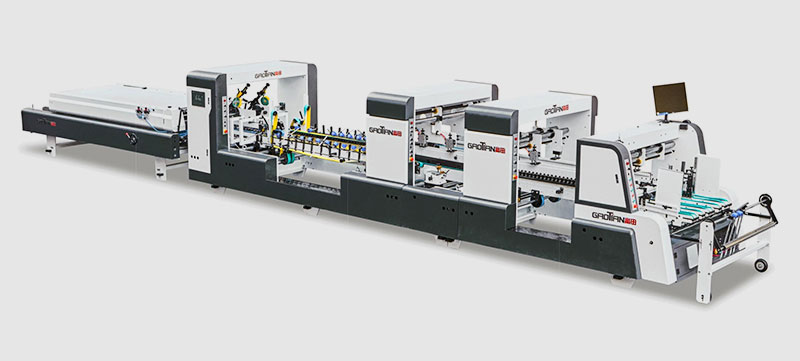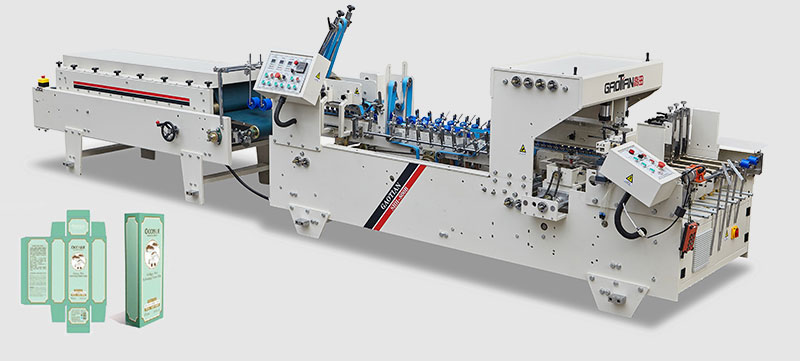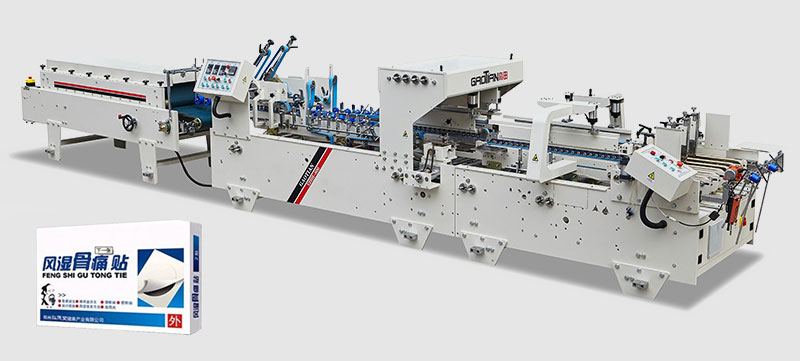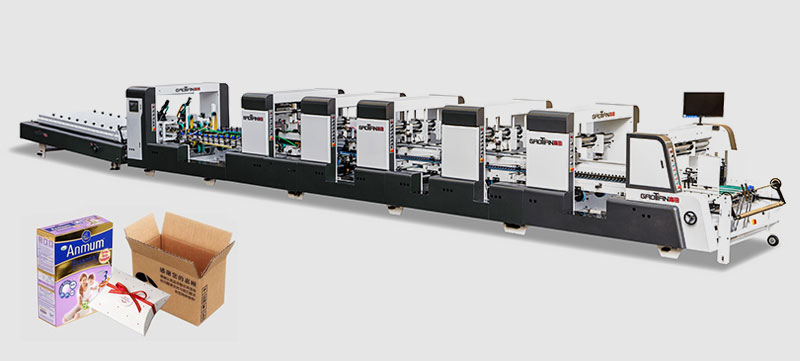Folder Gluer Machine
A folder gluer machine is a specialized industrial apparatus designed to automate the process of folding and gluing paperboard, corrugated board, or other sheet materials into finished packaging products such as boxes, cartons, and trays. Widely used in the packaging industry, these machines streamline production by integrating precise folding mechanisms with adhesive application, ensuring consistent quality and high throughput. This article outlines the key components, operational principles, and diverse types of folder gluer machines, including their roles in manufacturing processes.
Components of a Folder Gluer Machine
A typical folder gluer machine comprises several interlinked systems that work in coordination to achieve accurate folding and bonding:
1. Feeding System
This component handles the input of raw material sheets, such as pre-printed or plain boards. It often includes vacuum suction cups or mechanical grippers to separate and align sheets, preventing double feeding—a critical function in double pieces folder gluer models designed to process two sheets simultaneously.
2. Folding Unit
The core of the machine, the folding unit uses adjustable guides, belts, and mechanical arms to bend sheets along pre-scored lines. Key parts include:
- Folder Gluer Belts: High-tension, heat-resistant belts (often made of polyurethane or rubber) that grip and transport materials through folding stages. These belts feature precision grooves or textures to ensure stable movement and prevent slippage, especially during complex multi-panel folds.
- Folding Plows: Metallic blades or curved plates that guide sheets into specific angles, such as 90-degree folds for box corners.
3. Gluing System
This subsystem applies adhesive (typically water-based or hot-melt glue) to designated areas of the sheet. It may include:
- Glue Pumps and Nozzles: For precise adhesive distribution, often controlled by servo motors to adjust flow rates based on material thickness.
- Glue Wells and Rollers: In roller-based systems, a rotating roller picks up glue from a well and transfers it to the sheet edge, ideal for uniform application in corrugated folder gluer machines processing thick cardboard.
4. Driving and Control System
A combination of motors (usually servo or gear-driven) and programmable logic controllers (PLCs) manages the machine’s speed, synchronization, and error detection. Modern machines integrate touchscreen interfaces for operators to input parameters like fold dimensions, glue volume, and belt tension.
Working Principle
The operation of a folder gluer machine follows a sequential workflow:
- Sheet Feeding: Raw material is loaded into the feeder, which separates individual sheets and feeds them into the machine at a consistent pace.
- Pre-Folding Alignment: Sheets pass through guide rails that align them according to pre-defined scores or creases, ensuring folds match the desired box structure.
- Folding Execution: Folder gluer belts transport the sheet through folding stations, where plows or mechanical arms bend the material along scored lines. In flexo folder gluer models integrated with flexographic printing units, this stage may follow on-machine printing for labeled packaging.
- Adhesive Application: Glue is applied to contact surfaces (e.g., box flaps or tabs) as the sheet moves through the gluing station.
- Bonding and Drying: The folded structure is pressed together by pressure belts or rollers to ensure adhesion, followed by a drying conveyor that cures the glue before the finished product is discharged.
Types of Folder Gluer Machines
1. Corrugated Folder Gluer
Specialized for processing corrugated cardboard, these machines feature heavy-duty components to handle rigid, multi-layered materials. They often include reinforced folder gluer belts with higher tensile strength and adjustable folding plows to accommodate varying flute sizes (e.g., A, B, C, E flutes). Common in packaging boxes for e-commerce, appliances, and industrial goods, they ensure robust bonding for load-bearing structures.
2. Flexo Folder Gluer
A hybrid machine combining flexographic printing with folding and gluing capabilities. These systems first print graphics, text, or barcodes directly onto sheets using flexible relief plates, then proceed with folding and gluing in a single pass. Flexo folder gluer operators must master both printing setup (e.g., ink viscosity, plate alignment) and folding parameters, making these machines ideal for producing branded packaging with integrated design and structure.
3. Double Pieces Folder Gluer
Designed to process two separate sheets simultaneously, this type is used for creating complex structures like two-piece boxes (lid and base) or multi-compartment trays. The machine includes dual feeding systems and synchronized folding units to ensure both pieces are folded and glued with identical precision, reducing production time for multi-component packaging.
4. High-Speed Folder Gluer
Optimized for large-scale production, these machines feature advanced servo drives and automated changeover systems to minimize downtime during format adjustments. They can handle speeds exceeding 400 meters per minute, making them suitable for mass-producing simple cartons like cereal boxes or pharmaceutical packaging.
Operation and Maintenance
Flexo Folder Gluer Operator Responsibilities
- Setup and Calibration: Adjust folding guides, glue nozzles, and belt tensions according to product specifications, using digital interfaces to input dimensions and material types.
- Quality Control: Monitor output for misfolds, glue smudges, or registration errors, ensuring compliance with industry standards (e.g., FEFCO guidelines for box dimensions).
- Routine Maintenance: Clean glue residue from nozzles, lubricate moving parts, and inspect folder gluer belts for wear and tear, as damaged belts can cause misalignment or material slippage.
Common Maintenance Practices
- Belt Replacement: Periodically replace worn belts to maintain traction and prevent stretching, which can disrupt folding accuracy.
- Glue System Cleaning: Flush glue lines with solvent after production runs to avoid clogging, especially when switching between different adhesive types.
- Software Updates: Regularly update the machine’s control system firmware to benefit from improved algorithms for speed and precision.
Applications in Packaging Industry
Folder gluer machines are integral to producing a wide range of packaging products:
- Retail Packaging: Folding cartons for cosmetics, food items, and consumer electronics, often manufactured on flexo folder gluers with integrated printing.
- Industrial Packaging: Sturdy corrugated boxes for shipping, produced on heavy-duty corrugated folder gluers capable of handling 3-ply to 5-ply boards.
- Specialty Products: Multi-compartment trays for fruits, medical devices, or automotive parts, created using double pieces folder gluers to assemble complex structures.
Conclusion
Folder gluer machines represent a fusion of mechanical precision and automation, enabling efficient production of diverse packaging solutions. From the robust components of corrugated folder gluers to the integrated printing capabilities of flexo folder gluers, these machines adapt to varied material types and design requirements. Proper operation by skilled flexo folder gluer operators and regular maintenance ensure consistent quality, making them indispensable in modern packaging manufacturing.





